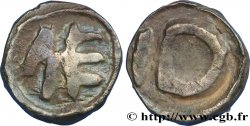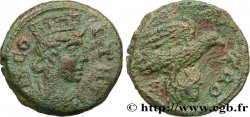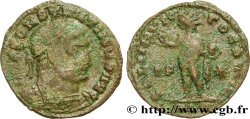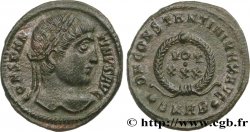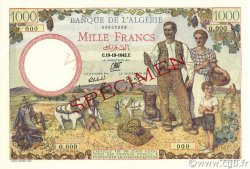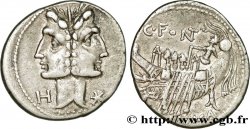v28_0782 - PAGUS MOSELLENSIS - METTIS - METZ (Moselle) - ANONYMOUS COINAGE Obole à la croisette
MONNAIES 28 (2007)
Начальная цена : 480.00 €
Назначить цену : 1 000.00 €
Цена реализации : 480.00 €
Количество ставок : 1
Максимальная предлагаемая цена : 717.00 €
Начальная цена : 480.00 €
Назначить цену : 1 000.00 €
Цена реализации : 480.00 €
Количество ставок : 1
Максимальная предлагаемая цена : 717.00 €
Тип Obole à la croisette
Дата: n.d.
Монетный двор / Город: Metz (57)
Металл: silver
Диаметр: 13,4 mm
Ориентация осей монеты: 12 h.
Вес: 0,61 g.
Редкость: UNIQUE
Комментарии о состоянии
Cette monnaie est frappée sur un flan large et fin. Le droit et le revers sont complets avec une patine grise et brillante et diverses petites concrétions sombres
Ссылки в каталоге: :
Лицевая сторона
Аверс: описание: ME liés dans le champ.
Обратная сторона
Реверс: Описание: D au-dessus d’une barre dans le champ ; une croisette dans le D ; bourrelet périphérique.
Комментарий
Si de nombreuses variantes sont référencées, les monnaies avec une croisette dans le D sont très rares. Le droit est réputé être la face avec le D ; techniquement le D est au revers sur cette monnaie. Cet exemplaire sur un flan large et mince est d’un poids particulièrement léger. En comparant aux poids observés pour les deniers de ce type, nous serions plutôt en présence d’une obole (de la moitié du poids du denier). Pour cette obole de 0,61 gramme, nous aurions donc un denier de 1,22 grammes. La qualité du flan, l’état de conservation et de frappe vont dans le sens de l’obole. Jusqu’à très récemment, les oboles mérovingiennes n’étaient pas connues ; un article de fond est en préparation et une obole de Melle devrait prochainement être publiée.
D’après Belfort (p. 365), le D dans le champ du revers a été interprété comme l’initiale de Dagobert II ou III (711-715) ou comme cette de Thierry III (720-737) dont le nom est parfois immobilisé sous la forme Dietricks. L’attribution à Metz tient aux nombreuses découvertes de monnaie à ce type dans la région messine. D’autres proposent le D comme abréviation de «denarius» ; les monnaies avec un A dans le champ pourraient alors correspondre à «argenteus».
Although many variants are referenced, coins with a cross in the D are very rare.. The obverse is deemed to be the face with the D; technically the D is on the reverse on this coin. This specimen on a wide and thin flan is of a particularly light weight. Compared to the weights observed for denarii of this type, we would rather be in the presence of an obol (half the weight of the denarius). For this obol of 0.61 grams, we would therefore have a denarius of 1.22 grams. The quality of the flan, the state of preservation and the striking are in favor of the obol. Until very recently, Merovingian obols were not known; a feature article is in preparation and an obol from Melle should soon be published..
According to Belfort (p. 365), the D in the reverse field has been interpreted as the initial of Dagobert II or III (711-715) or as that of Thierry III (720-737) whose name is sometimes immobilized in the form Dietricks. The attribution to Metz is due to the numerous discoveries of coins of this type in the Metz region.. Others propose the D as an abbreviation for \\\"denarius\\\"; coins with an A in the field could then correspond to \\\"argenteus\\\"
D’après Belfort (p. 365), le D dans le champ du revers a été interprété comme l’initiale de Dagobert II ou III (711-715) ou comme cette de Thierry III (720-737) dont le nom est parfois immobilisé sous la forme Dietricks. L’attribution à Metz tient aux nombreuses découvertes de monnaie à ce type dans la région messine. D’autres proposent le D comme abréviation de «denarius» ; les monnaies avec un A dans le champ pourraient alors correspondre à «argenteus».
Although many variants are referenced, coins with a cross in the D are very rare.. The obverse is deemed to be the face with the D; technically the D is on the reverse on this coin. This specimen on a wide and thin flan is of a particularly light weight. Compared to the weights observed for denarii of this type, we would rather be in the presence of an obol (half the weight of the denarius). For this obol of 0.61 grams, we would therefore have a denarius of 1.22 grams. The quality of the flan, the state of preservation and the striking are in favor of the obol. Until very recently, Merovingian obols were not known; a feature article is in preparation and an obol from Melle should soon be published..
According to Belfort (p. 365), the D in the reverse field has been interpreted as the initial of Dagobert II or III (711-715) or as that of Thierry III (720-737) whose name is sometimes immobilized in the form Dietricks. The attribution to Metz is due to the numerous discoveries of coins of this type in the Metz region.. Others propose the D as an abbreviation for \\\"denarius\\\"; coins with an A in the field could then correspond to \\\"argenteus\\\"







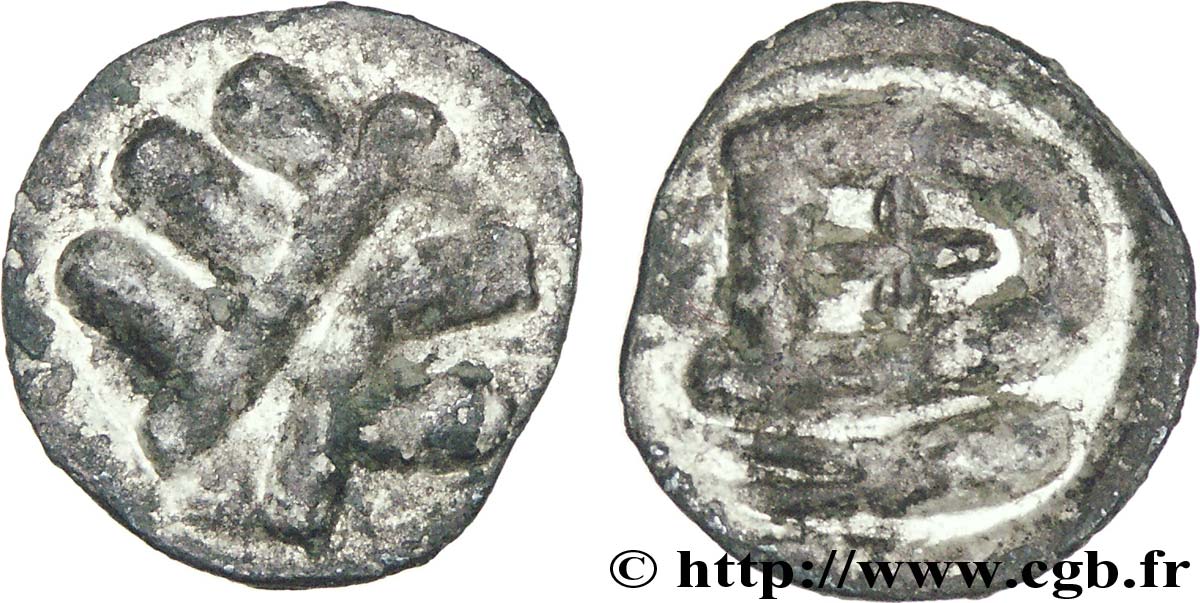
 Cообщить об ошибке
Cообщить об ошибке Распечатать страницу
Распечатать страницу Отправить мой выбор
Отправить мой выбор Задать вопрос
Задать вопрос Consign / sell
Consign / sell
 Информация
Информация